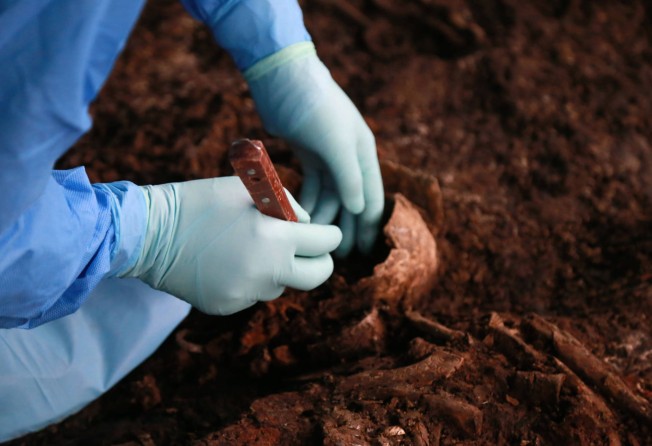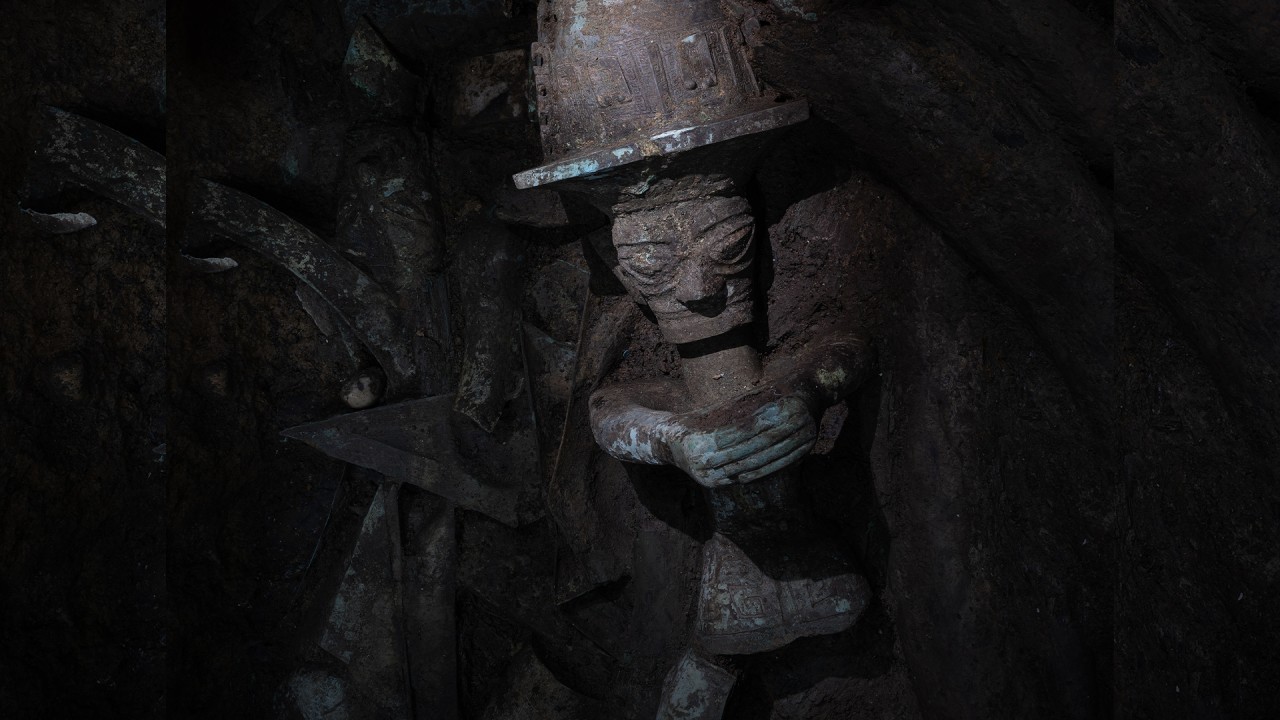
Chinese scientists discover remains of 128 children buried in urns in ancient Chinese funerary tradition
- The skeletons are believed to be about 2,000 years old and would not have been cremated
- The urns acted as a protection for the bodies and are a major reason the skeletons preserved well to this day

Archaeologists on Monday announced the discovery of 128 children buried inside of urns as part of an ancient Chinese funerary practice.
The excavation team unearthed the tombs along with coins, pottery and tiles in northern China’s Inner Mongolia autonomous region. They believe these were people who lived during the Han dynasty (202BC-220AD).
During this period, the bodies of children would not have been cremated. People would connect multiple urns – likely two, sometimes more – to create a protective “home” for the body.

Lam Wen-cheong, an assistant professor at the Chinese University of Hong Kong, said there are also examples of adults being buried in urns, but it is overwhelmingly used for children.
“We do not really know why, but it seems that, in this region, people started to use urn burials to bury their passed away children,” he said.
While burying the remains of children in urns sounds strange to modern sentimentalities, it is not overly different from a coffin. As for cremating the bodies before placing them in urns, Lam said Han dynasty people in northern and central China did not practise this tradition.
“In ancient China, cremation appeared quite late, usually after the Han period. In some places, we do find cremated burials dating to the Bronze Age, but in the central plains, they usually appear quite late,” he said.
Urns may have been common among children burials because Han dynasty tombs could have been a financial burden at a time when child mortality rates were high.
The tombs were elaborate and grandiose, usually made of brick chambers and filled with objects that people thought they might need in the afterlife, hence the discovery of coins and other items along with the skeletons in Inner Mongolia.
In Luoyang, in the central province of Henan, a museum features 25 Han-era tombs, many of which can be toured.
For the wealthy, funerals became a show of status, with some artwork depicting scenes of the scores of people and chariots that showed up at the procession to honour the deceased.
As the people became wealthier, the grandness of the tombs increased and sometimes are referred to as “palace tombs”.
But, for regular people, the end-of-life ritual was most likely unattainable. Because they required a foundation, even small tombs needed a significant amount of bricks to build.
“A lot of families would not have been able to afford these tombs for their family members, especially children,” said Lam.
Urn burials became an alternative, as the Han-era people still wanted to protect the body from the basic elements of nature and the soul from various spirits or demons.
We do not really know why, but it seems that, in this region, people started to use urn burials to bury their passed away children.
The protective nature of the urns means that, when they are discovered, they often contain a well-preserved skeleton. Far fewer children from that period have been found outside central and northern China.
Urn burials were not a practice unique to ancient China. In 2012, scientists in the southern Indian state of Tamil Nadu discovered urn burials that dated back to between 1,800BC and 1,500BC, far earlier than the discovery in Inner Mongolia.
In Budapest, Hungary, scientists unveiled in July urns from between 2200BC and 1450BC that appear to have stored cremated remains.
